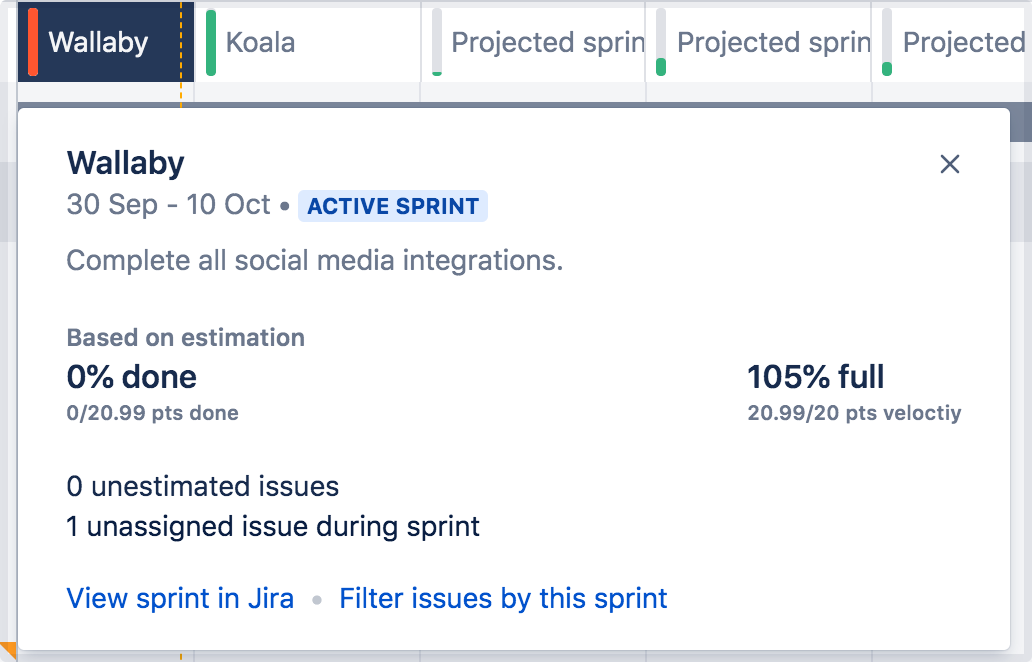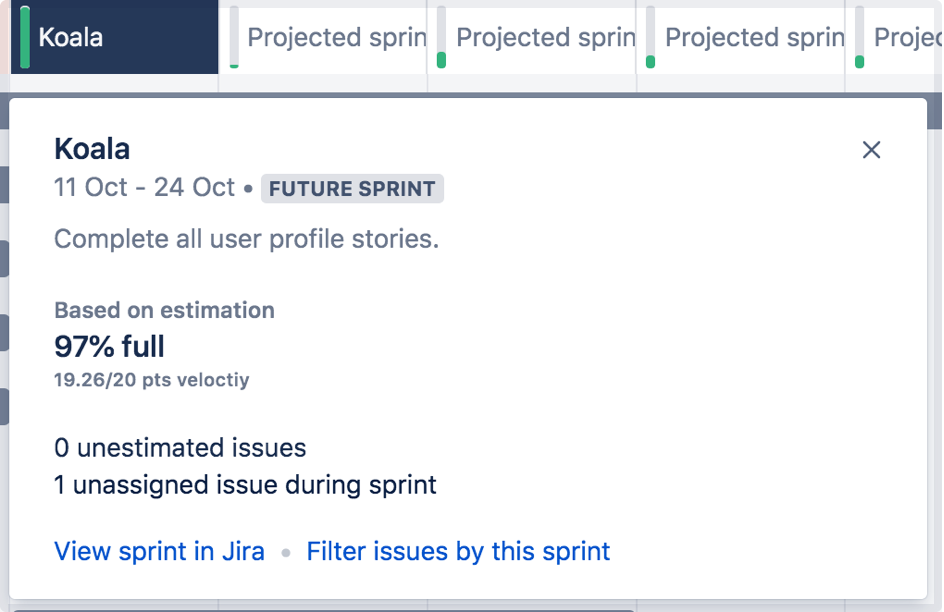Managing capacity
When managing work across multiple teams, you might assign too much work to a team and exceed their capacity. Advanced Roadmaps can make it easy for you to monitor team capacity and make changes where you need to.
Example of an overbooked sprint in the timeline
Example of a healthy sprint in the timeline
What is team capacity?
Team capacity is defined as the ratio of units of work that a team takes on for a given period of time, against the maximum units of work that a team can take on for that given period of time. Maximum units of work essentially means one of the following:
- Scrum teams using story points, this is the velocity of a sprint.
- Scrum teams using time-based estimates (days or hours), this is the weekly capacity (in hours) of the team.
- Kanban teams, this is the weekly capacity (in hours) of the team.
In the sample sprints above, note the following details:
- The team estimates work in story points, and is therefore a Scrum team.
- From the sprint dates, we can infer that the team works in 2-week sprints.
- In each sprint, the team has a velocity of 20 story points, which means the team can complete a maximum of 20 story points.
- Sprint Wallaby has been allocated 20.99 story points, which exceeds team velocity. Therefore, Sprint Wallaby is overbooked and is displaying a red capacity bar.
- Sprint Koala has been 19.26 story points, which is within team velocity. Therefore, Sprint Koala is a healthy sprint and is displaying a green capacity bar.
You may need to do any of the following tasks to manage team capacity:
See Creating teams to learn how to set the maximum units of work.


